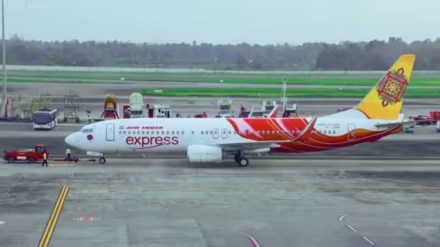Air India Express, the low-cost carrier controlled by the Tata group, is all set to induct 350 pilots who are undergoing training currently. These additions will almost double the number of pilots, from 400 currently to almost 800, with the airline.
These additions come at a time when the airline industry is facing one of its worst crisis, in terms of pilot shortage.
This is part of the airline’s plan to more than double the pilot pool of the airline from 400 to 800-900 over the next one year, Aloke Singh, managing director, Air India Express, told FE.
The expanded recruitment drive is fuelled by the series of new aircraft scheduled to join its fleet. The Air India group, comprising four airlines – Air India, Vistara, Air India Express, AirAsia India – is set to take delivery of one new aircraft every six days between now and the end of 2024. This translates into a minimum count of new aircraft inductions to 70. Typically, one aircraft needs 15-16 pilots.
Air India Express, which will shortly see full integration of AirAsia India into itself, is aiming to double its domestic market share to 15% over the next five years. In the short haul international sector, the airline is aiming to hit 20% market share in 5 years as compared to 11%.
“These are not lofty targets but completely doable. These are fairly robust targets,” Singh added.
Formed to serve short-haul international routes such as the destinations in the Middle East, Air India Express has negligible share in the domestic market. As of September end, Air India Express only has a 7.1% market of the domestic market share, which is entirely of AirAsia India, according to data from by the Directorate General of Civil Aviation (DGCA).
The business expansion by Air India Express comes at a time when the country faces one of its worst pilot shortage crises.
Akasa Air, the low-cost carrier formed little over a year ago, had to cancel flights and stop operations on certain routes after around 40 of its pilots (around 10% of its total pilot pool) quit within three days or without serving their notice period. Akasa has around 450 pilots as of now and has another 125 pilots who have signed contractual commitments.
A few months ago, SpiceJet served legal notices to its captains and first officers who also quit the airline without serving the notice period. All the three airlines – Air India Express, Akasa Air and SpiceJet – fly a common aircraft type which is the Boeing 737.
“The pilot shortage is not something which will get solved in 1-2 months, this is a long-term industry issue. The fact is that there is an enormous amount of growth coming in and we have to build resources for that and we are doing just that,” Singh added.
In the medium to long term, Air India Express is looking at regional, short-haul international markets in South Asia such as Bangladesh, Nepal, Sri Lanka, Maldives. In about 6-12 months, it will look at South East Asian destinations like Vietnam, Thailand and Malaysia.
“As of today, the airline, as a common entity, the share split between domestic and international is 50:50. Broadly, it will be maintained in a five-year horizon. In the next one year, we might be a little skewed towards international because we want to catch up on the growth we have lost. We see these routes as more profitable and more efficient,” Singh added.
